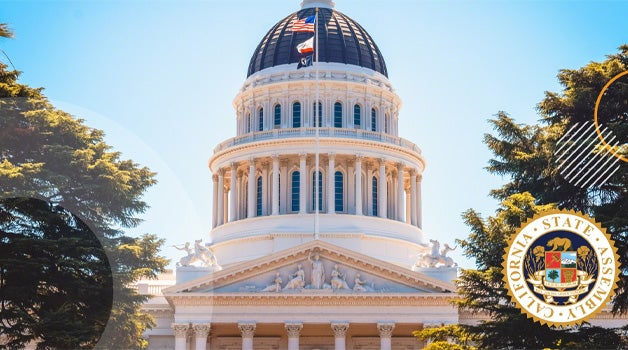I've had the privilege to attend a number of GS1 Connect conferences, but rarely have I come back so energized. There was a wind of change at GS1 Connect 2023 in Denver. What may seem like a small step is in fact a giant leap for the consumer products industry -- transitioning from the good old 1D barcode to the (almost) all-mighty 2D QR code!
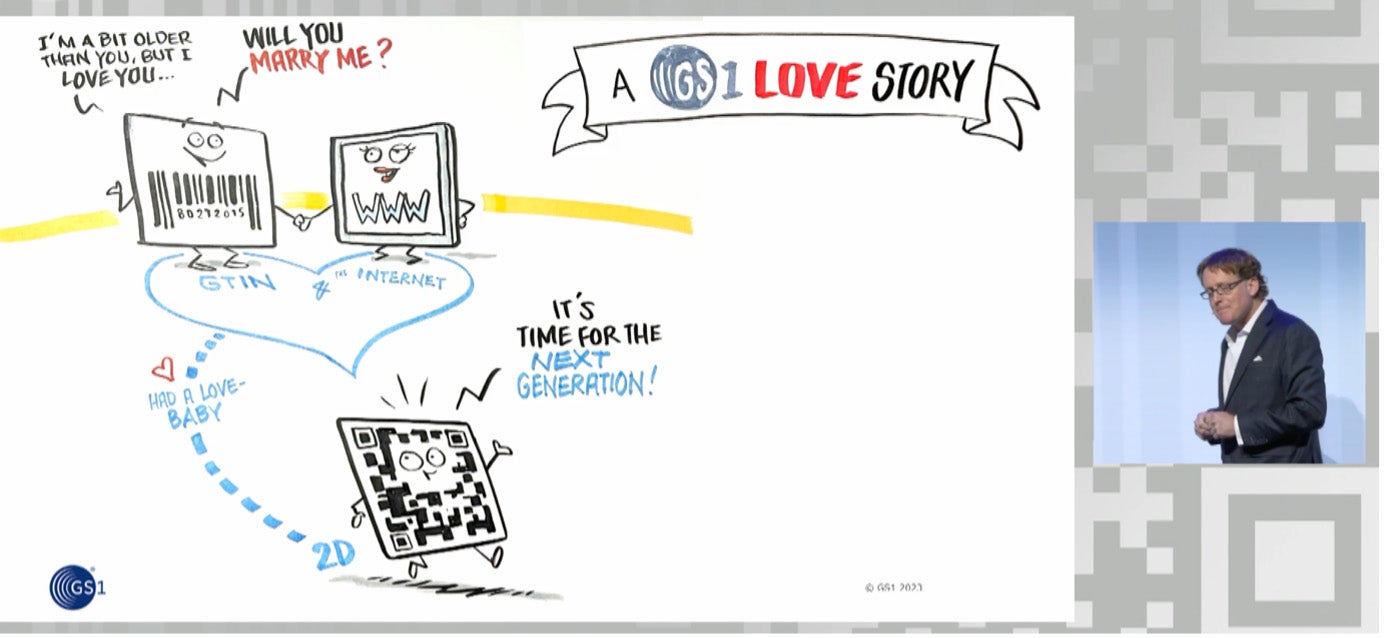
I have covered the transition from 1D to 2D before as a technology innovator and standards evangelist. This year was different, however. This year at GS1 Connect there was a universal endorsement and commitment to make the transition a reality. This affirmed the momentum we witnessed earlier in the year at the GS1 Global Forum. In this blog, I cover the learnings from both events.
Stepping back for a second, it is worth reminding ourselves why the industry decided to evolve from 1D symbology to 2D codes. 1D barcodes fundamentally changed the business of consumer goods. With an estimated 6 billion barcode beeps a day at checkout, 1D barcodes are undoubtedly a cornerstone of commerce. However, beyond checkout, 1D barcodes have very little meaning for you and me. Consumers cannot engage with products via 1D barcodes.
In a world where consumers demand more transparency about safety, health impact and sustainability credentials, the lack of a direct channel of communication between brands and consumers via the products they are purchasing and consuming is a missed opportunity. This disconnect is exacerbated by emerging regulatory efforts such as the Federal Information Security Management Act (FISMA) in the US and the Digital Product Passport (DPP) in Europe – both requiring brands to make product data easily accessible to consumers.
Enter 2D barcodes – 2D codes contain significantly more data than 1D barcodes. 2D codes encode the latest evolution of GS1 identities known as GS1 Digital Link. I had the honor to co-chair the GS1 Digital Link Work Group. GS1 Digital Link transforms the GS1 identifiers that were traditionally encoded as number into 1D barcodes (e.g., the GTIN for products or GLN for places) into Web addresses (aka URLs) encoded into 2D barcodes or NFC tags.
What does this mean? When a GS1 Digital Link is encoded into a QR code the tag becomes readable via a consumer’s smartphone using the native camera app – no special app required. This means brands now have a powerful two-way communications channel with consumers. Valuable information and applications can now be directly delivered to the consumers via digitized products connected to the Web.
Several brands showcased their 2D and Digital Link pilots at GS1 Connect and GS1 Global Forum. At both venues, Procter & Gamble presented its first products to feature a QR code allowing consumers to access detailed product manuals, warranty extensions, and information to order spare parts.
PepsiCo talked about the opportunities arising from the move to 2D for consumer engagement applications like sharing dynamic product information, loyalty reward programs, sustainability initiatives, and recycling data and instructions. The also mentioned the HolyGrail 2.0 project and the opportunity to combine digital watermarks for more efficient sortation with Digital Link QR codes for informing consumers about recycling.
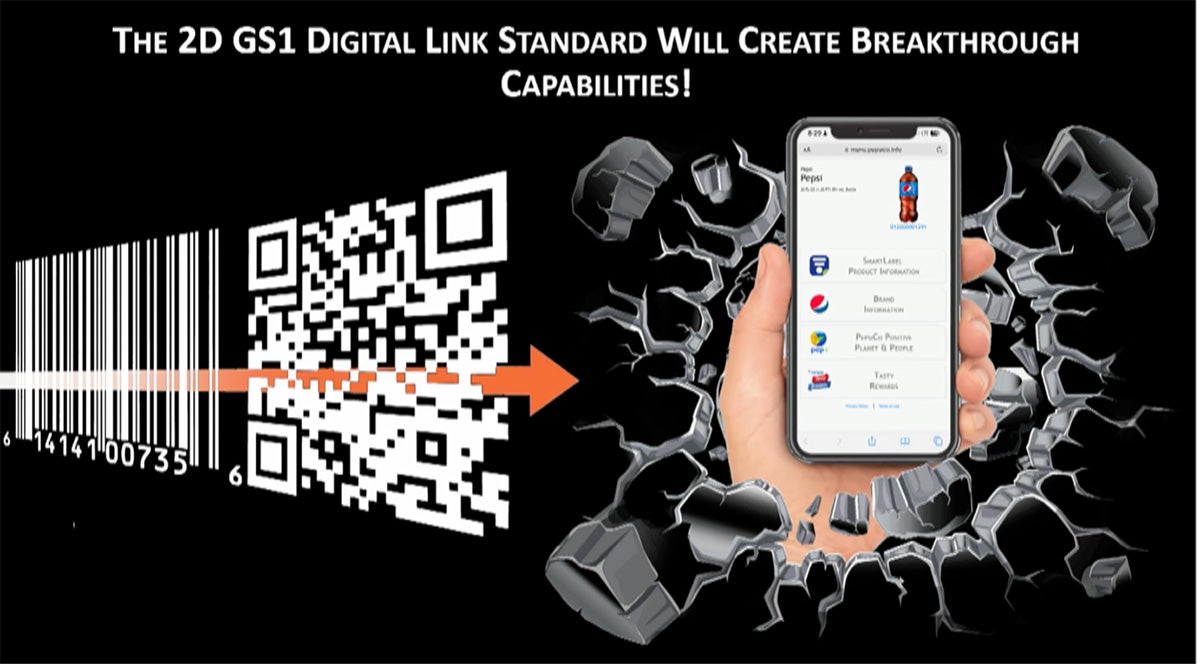
Retailers are also embracing the transition. At GS1 Global Forum, two major retailers – Carrefour and Metro Group -- presented their plans to adopt GS1 Digital Link and the transition to 2D. Both stated the time is now, affirming 2D is the way of future retail. Retailers must embrace the transition to remain relevant for the next 50 years – giving a nod to the 50th anniversary of the GS1 1D barcode this year.
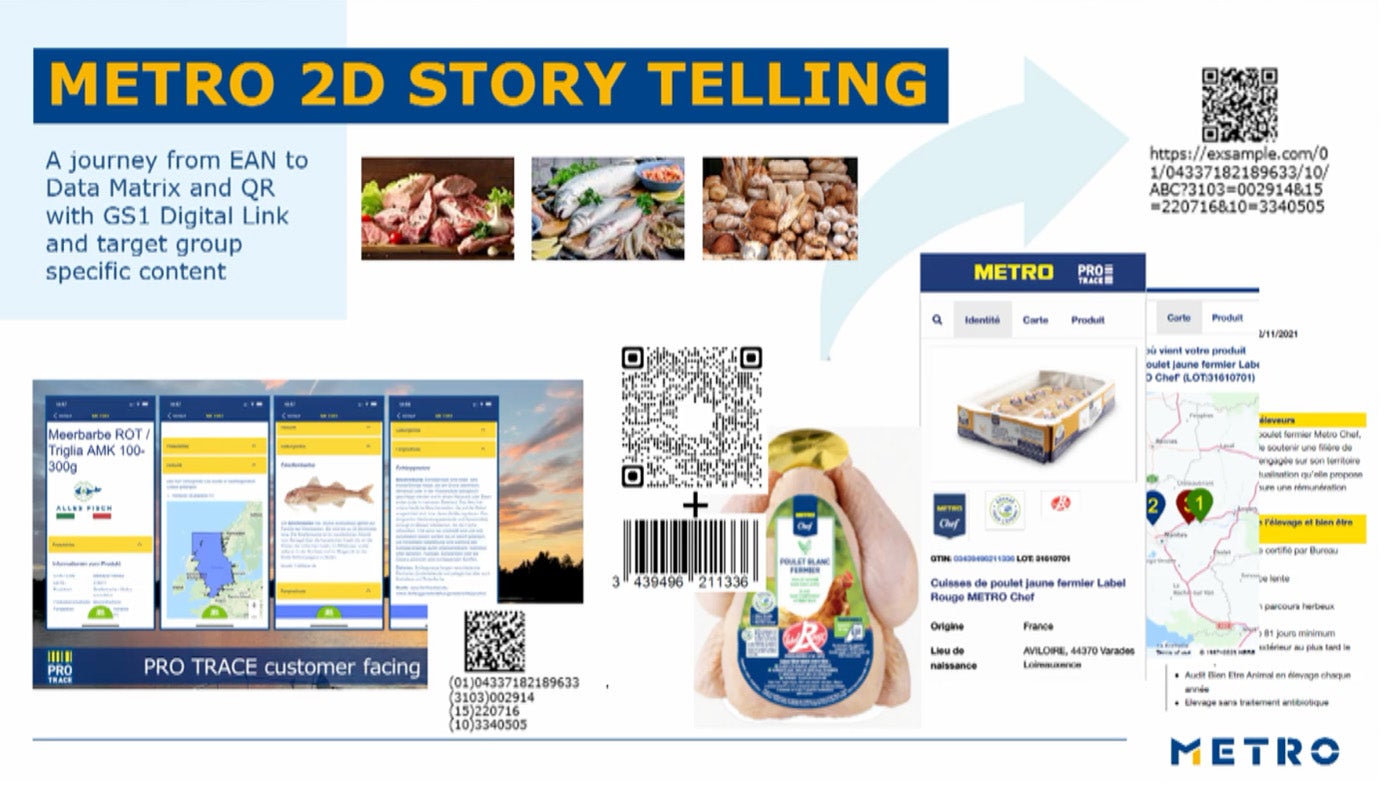
Consumer Packaged Goods (CPG) brands and retailers were not alone to showcase their 2D and Digital Link implementations at GS1 Connect. Digimarc customer PUMA announced the company moved all their North American stores to now sell products with serialized Digital Link QR codes for both consumer engagement and checkout! PUMA Point of Sales (PoS) system no longer uses the 1D UPC barcode but solely the new Digital Link QR code, making PUMA the world’s first brand to "beep at checkout" with Digital Links.
Using Digimarc Engage, QR codes are also used for a mix of use cases like loss prevention, and consumer engagement pre- and post-purchase (in and out of store) including augmented reality (AR). PUMA also combined the Digital Link QR code with an RFID (EPC Gen2 UHF) tag on most products, both pointing to the same digital twin on the Digimarc Illuminate platform. This allows seamlessly combining consumer centric experiences with supply chain events. For instance allowing to deactivate the RFID tag when the QR code was scanned at Point of Sale.
All in all, a great example of how feasible the transition to 2D is for brands across industries, and most exciting, the opportunities 2D presents to deliver on consumer demands for transparency, authenticity, and personalized experiences.
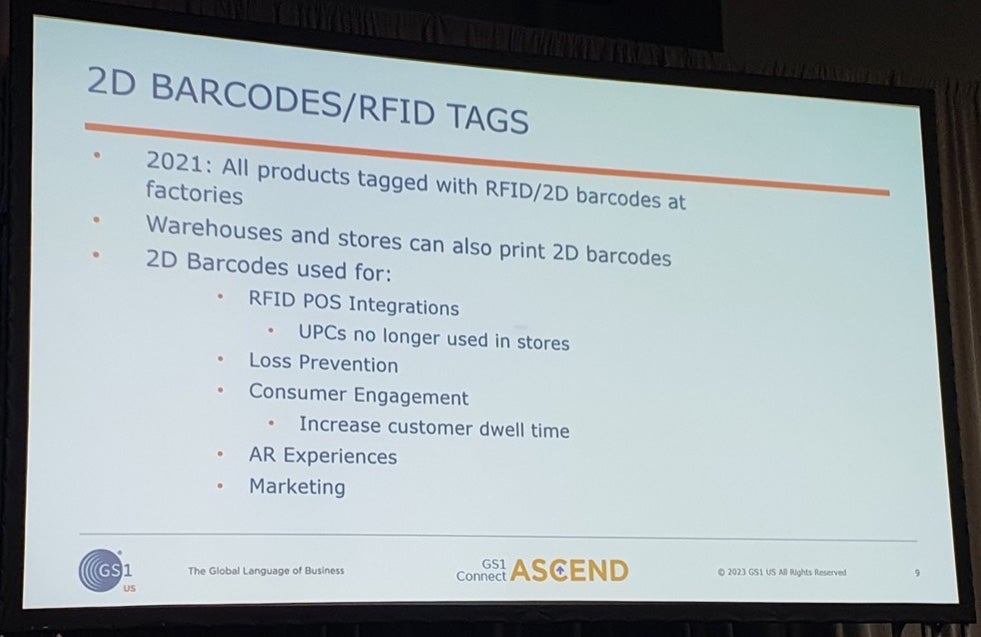
However, not all brands have the flexibility to implement consumer accessible QR codes – primarily because of regulations pre-dating the ratification of the Digital Link standard. For instance, the world of pharma is largely bound to the implementation of Data Matrix carriers. While largely serialized, these codes do not contain a Digital Link and hence are not directly accessible by consumers. Nevertheless, there are ways to bridge these codes with Digital Links. Johnson & Johnson presented their implementation of a mobile application for patients that translates that Data Matrix payload into a Digital Link. It then uses the Link Types feature of the Digital Link standard to request specific content about the product such as the electronic patient leaflet. This implementation is very similar to our experience at Digimarc helping two pharma customers with their e-leaflet deployment. This ability for an application to request the content it needs in a standardized way is another great benefit of the Digital Link standard.
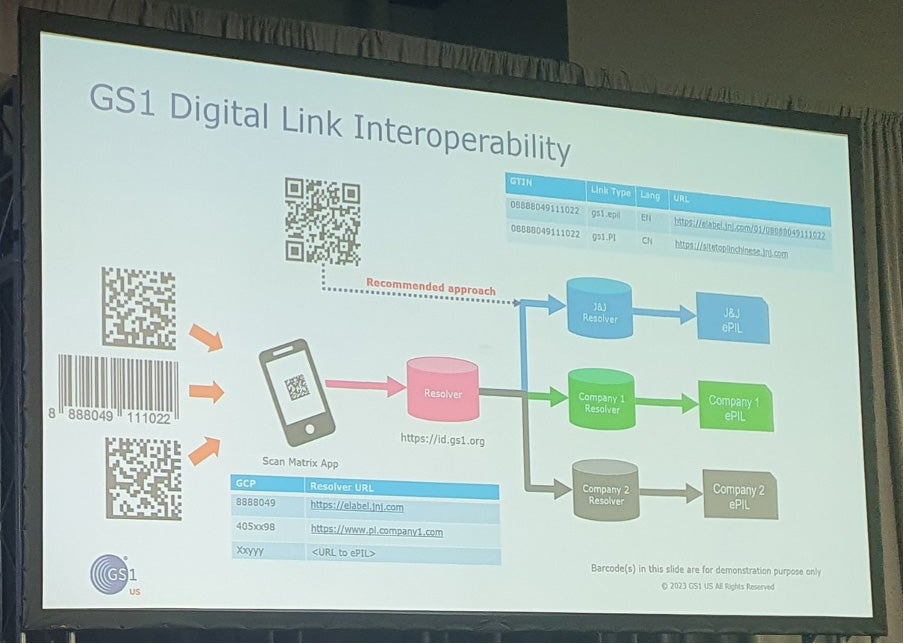
Printer and scanner manufacturers also demonstrated their readiness for 2D at scale both at GS1 Connect and GS1 Global Forum 2023. They showcased their ability to print QR codes at scale with technologies such as laser engraving, ink jet and thermal inkjet, piezo, and print and apply. A live demonstration by Macsa ID printed 100 serialized codes per second on stage with a single laser.
Finally, we demonstrated the capabilities of the Digimarc Illuminate platform to support large-scale Digital Link deployments. We showcased the use of Digimarc Engage to deliver product data to brands while delivering different experiences to consumers via the back of a single Digital Link depending on the reading context. We also demonstrated how overt Digital Link QR codes can be combined with covert digital watermarks to support brand integrity use cases.
With the Sunrise 2027 initiative, GS1 invited its members to prepare for a transition from the good old UPC / EAN barcode to a QR code carrying the new Digital Link web address. This year's GS1 Connect theme, "Beyond the UPC," was the perfect illustration of this fascinating transition. Brands demonstrated how they are experimenting with the direct connection to consumers to yield greater business efficiencies while delivering on consumer demands for more data and personalized experiences. The transition has started. Will you be ready for 2027? One code to rule them all!
